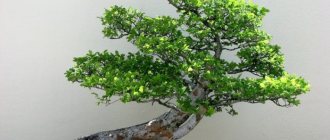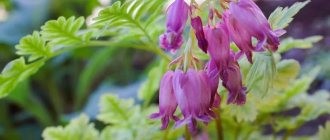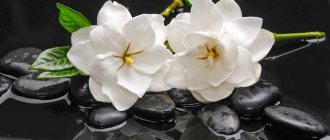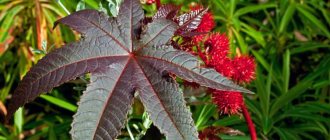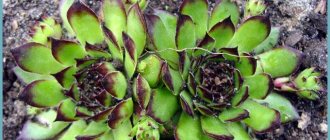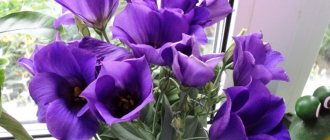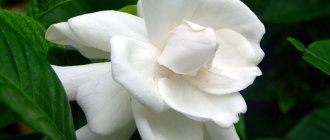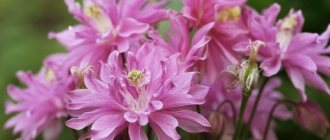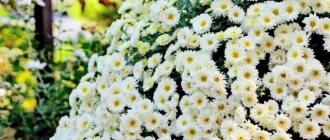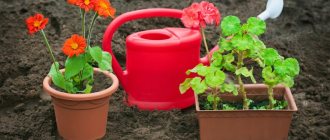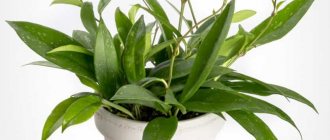The gardenia flower is a plant native to the tropics. Many gardeners agree that it is very capricious and requires careful care.
Considering that there are a sufficient number of varieties, the most optimal for home conditions is jasmine. If favorable conditions are created, this flower will delight you for a long time.
What is necessary?
Gardenia jasmine will fit well into any room with any interior. The apartment will be filled with comfort, and thanks to its unpretentiousness, it will fill the room with grace for a long time. Therefore, you need to take care of favorable conditions for the plant. Here are a few basic rules.
First of all, keep the soil moderately moist. Also, sudden changes in temperature are undesirable, and the most optimal is a twenty-degree temperature regime. The storage location should be filled with light, but direct sunlight falling on the plant is not suitable.
Flower growth is fastest in conditions with high humidity. And finally, try to use warm, purified, settled or rain water.
Lighting and air temperature
Successful cultivation of Gardenia excludes its maintenance on windows facing north. Otherwise, the leaves will begin to turn pale and then turn yellow. In summer, in order to avoid burns of tender leaves, sunlight should be shaded with paper or a light cloth.
Failure to comply with the thermal regime is the reason for the absence of peduncles. The tropical guest is demanding: the room temperature should not change abruptly and be above 23-24°C. If the thermometer in the room shows less than 17°C, this is the answer to the question why the buds do not bloom.
To maintain the necessary microclimate in the heat, bottles with frozen water are placed near the flowerpot, which lower the temperature. It is forbidden to “refresh” gardenia under air conditioning, because it gets sick in drafts.
Care in winter, when active development stops, differs from summer-autumn care in the need for additional artificial lighting and reduced moisture. The room can be cooled to 16-20 °C.
Light
As we have already mentioned, the lighting must be constant. The south side of the house is not suitable due to the presence of sunlight, so if possible, give the plant a western or eastern window.
In winter, try not to move or turn the flower, otherwise it may crumble and stop growing. Also, avoid drafts.
Soil selection and replanting
Gardenia does not tolerate replanting, so the procedure is carried out in extreme cases. If possible, it is replaced by transshipment. The transportation substrate is changed to a full one 2-3 weeks after purchasing the bush, when it acclimatizes.
Before planting, a flowerpot (made of ceramics or plastic) is disinfected with a solution of potassium permanganate and filled one third with drainage, and the soil mixture is poured on top. You can prepare it yourself from sand, peat, leaf, turf and coniferous soil, taken in equal parts. Use this recommendation: pour boiling water over all ingredients before mixing.
The choice of soil in the store depends on the acidity level (PH 4.5-5.5) and the purpose: soil is best suited for azaleas, hydrangeas, and rhododendrons.
To make it more loose, add vermiculite or perlite. It is not advisable to use a universal substrate.
To remove the bush from the pot with less trauma to the roots (they are very delicate), water the soil generously. It is useful to do some root pruning when repotting. Weak and wilted cuttings, overgrown stems, and dried flowers are also pruned.
Temperature
In the warm season, gardenia at home requires approximately 22 degrees of heat. In winter, the flower will lay buds, and this requires a slightly lower temperature - from 16 degrees. However, do not exceed the specified limit for summer - the life process may slow down.
The air and soil must be at the same temperature - therefore strong changes are unacceptable. Two or three temperature jumps can completely ruin a flower.
Room lighting
Light plays an important role when growing gardenia at home on a windowsill. To provide the plant with optimal conditions for proper functioning, you should organize high-quality round-the-clock lighting in the room. However, there is one caveat: on hot summer days, the plant should be protected from the hot and blinding rays of the sun.
In summer, gardenia should be placed in window openings facing west and east, in winter - to the south. In addition, gardenia is susceptible to changes in lighting.
During the period of formation of numerous buds, the container with the plant does not need to be moved or rotated; in most cases, this negatively affects the gardenia inflorescences.
How to water?
Home care requires strict adherence to water balance. It is noteworthy that depending on the season, the flower requires different amounts of moisture. For example, when it is actively growing and developing, abundant watering is necessary after the soil dries out.
During the demi-season period, the plant should be watered once every 3-4 days after the soil has dried. During the cold season, provide water supply at a minimum level.
Use slightly warm water - it should be settled, purified or rainwater. A small amount of lemon juice in the liquid will not be amiss.
When buds begin to appear, try to provide high humidity. It would not be superfluous to organize such conditions during the rest of the plant’s life.
After the flowers open, you should stop spraying the gardenia. First of all, because they are fragile and can change their color. A small container of water located near the pot will not be superfluous.
Other varieties of gardenia
As described above, gardenia has a long history, and its cultivation was resorted to during the reign of the Japanese and Chinese dynasties. Today there are more than 250 species of this amazing plant, but it is difficult to distinguish wild varieties from previously bred ones. The exception is new species that were introduced already in the twentieth century. In the process of creating new varieties, the plant began to be domesticated. Decorative options with double flowers are often used to decorate homes. It is worth paying attention to the most popular varieties.
- Brighamii. This variety is found on the Hawaiian Islands - Molokai, Lana, Oahu. It is presented in the form of a tree, the length of which is up to 6 meters. The elongated leaves are presented in light and dark green shades, while attracting attention with their brightness due to the presence of light veins. The flowers are solitary, white, single-row. They have 6 petals and emit a very pleasant smell.
- Globosa. This is a small tree or bush. The flowers are presented in an unusual shape - in the form of a bell. White flowers reach a diameter of 4 cm. The oval-shaped leaf is slightly elongated.
- Taitensis. The plant of this variety grows in the form of a tree, its height reaches 7 meters. This variety of gardenia grows on the island of Tahiti. The oval leaves are quite large, their length is 25 cm. Snow-white, single-row, double flowers have a diameter of 20 cm. This variety blooms only once a year, and flowering is spontaneous.
- Corinata (Kula). This is a small tree native to Malaysia. The flowers attract attention with their originality, since they have a long tubular corolla, complemented by single-row petals bent outward. The highlight is the change in color - the marble shade is replaced by lemon, and when the flower blooms, the petals become orange.
- Thunbergium. This is a rather unusual variety that comes from Africa. Its discoverer is the scientist K. Thunberg. This tree reaches a height of 2 meters and has a bare trunk. The leaves are quite soft, they are found in 3-4 pieces at the ends of the branches. Quite large white-cream flowers have a diameter of up to 8 cm, while the tubular corolla is 7 cm long and has 8 petals.
A special feature of this variety is the fact that the color of the flowers intensifies at night. This species is often used to create new varieties.
All of the above gardenia varieties are ideal for growing in mild climates. They are often found in gardens, parks and greenhouses, as well as conservatories, which have more extreme conditions. Jasmine or white gardenia (Gardenia Jasminoides) are ideal as an indoor flower. The double flowers are quite large, the luxurious jasmine scent attracts attention to this amazing species. This variety is presented in the form of a small bush, decorated with luxurious buds.
Many gardeners like golden or yellow gardenia (Gardenia Carinata) because it can change its color. Initially, the buds are presented in a white shade, then they acquire a lemon-yellow color, which turns into orange. Of course, this variety is also suitable for home cultivation, but it is worth noting that then its growth slows down significantly.
Only after a few years will the gardenia be able to turn into a tree. In nature, this variety can reach a height of up to 10 meters.
Tahitian gardenia is also called the flower of the tiare tree. This shrub grows on the islands of Polynesia. Its snow-white flowers are quite fragile and delicate. The aroma is simply impossible to describe in words, as it is very multifaceted and beautiful.
The peony species is quite common due to its luxurious double creamy-white flowers with a diameter of up to 22 cm. It emits a rather delicate scent. Due to the presence of a large number of lateral buds, flowering is quite long. The bush reaches a height of approximately 85–90 cm. The dark green leaves are quite large.
Pink gardenia, called amoena, is a very rare variety. They are almost impossible to see in homes or gardens. It sometimes grows in large botanical gardens. Its peculiarity is the presence of oval leaves with pointed tips. Her entire body is covered with thorns, and the pink flowers emit a luxurious aroma.
Gardenias contain a large number of enzymes, amino acids and antioxidants. Extracts and esters from it are often used in medicine, as well as in the manufacture of cosmetics.
Trimmings and pests
If dried leaves appear, it is recommended to remove them immediately. The same goes for weak shoots and flowers. When the plant has grown sufficiently, it will not be a bad idea to thin out the leaves a little.
Basically, all gardenia problems, such as falling flowers, faded leaves, unopened buds, are associated with insufficient lighting or temperature conditions.
If yellow stains appear, we recommend slightly acidifying the soil with lemon juice, and if the plant develops too slowly, there are probably pests.
Thus, we have examined the main aspects related to home care for this flower. All you need is the right approach, following a few basic rules, and you won’t need photos of gardenia - the plant will delight you live, on your window.
Gardenia in open ground - photo
Gardenia is a tropical beauty that is primarily grown in temperate climates as a houseplant or in greenhouses. However, with due attention and compliance with all the rules, as well as by choosing the right variety, it is possible to grow this wonderful plant on your own site.
Features of home care for gardenia jasmine
Gardenia jasmine is very capricious, and caring for it contains certain difficulties. It reacts sensitively to any changes in conditions by yellowing the leaves and dropping buds. Success in growing a plant lies in strict compliance with all the requirements it makes.
Lighting and temperature conditions
The beautiful gardenia is a big fan of bright light, but not active sunlight. At midday, it is necessary to protect it from the active sun using a translucent curtain. Otherwise, burns will appear on the leaves. The best placement is a southwest or west window. The north window sill will need additional lighting.
The flower does not tolerate frequent movements, so it is very advisable to immediately provide it with a permanent place in the house.
He especially does not like changes during flowering and can even drop buds in response to a slight rotation of the pot.
The optimal temperature for the plant in summer is from 21 to 24 °C, in winter - within 16-18 °C, a decrease to 10 °C is acceptable.
In the winter months, coolness is very important for it, in which it is less depleted in conditions of insufficient daylight.
The beauty suffers greatly from drafts and temperature changes.
But she is especially afraid of hypothermia of the roots and can react to it by falling leaves and rotting roots. Therefore, you should not place a flowerpot with a green pet on a cold surface. In this case, some kind of elevation will help out.
Watering and humidity
You need to water your favorite flower moderately. Both over-drying of the earthen clod and its over-moistening are very dangerous for it. In spring and summer, the soil should always remain slightly moist; in winter, it is allowed to dry out a little between waterings to a depth of 1.5 cm.
The water should be boiled, filtered from impurities and lukewarm. It is necessary to make it a rule to always drain it from the pan after watering. It is useful to acidify water with lemon juice (a few drops per liter). The plant absorbs many nutrients only in an acidic environment.
High humidity is another important condition for the health of a beauty. She loves daily sprays. In summer, water treatments should be especially frequent. The flowering bush should be sprayed carefully so that droplets of moisture do not fall on the delicate petals. It doesn’t hurt to place the tree on a tray with damp moss and place containers of water nearby.
Fertilizer and feeding
From spring to autumn, the plant is fed every two weeks, alternating fertilizers for flowering plants and any organic fertilizer. You can use fertilizer for azaleas. A couple of times per season, foliar feeding is carried out with preparations containing iron.
Rest period
From October to February the plant has a dormant period, when it rests and gains strength. At this time, watering is reduced and fertilizing is cancelled. Rest for a flower is very important so that it does not become exhausted and prepares for a new abundant flowering.
Bloom
The beautiful gardenia blooms from early summer to October. It takes quite a long time to prepare for flowering. When setting buds (March-April), the bush is watered moderately, protected from bright sun, and the room is regularly ventilated (without drafts!). During this period, the correct temperature regime is especially important: at night - from 16 to 18 °C, during the day - from 18 to 20 °C.
With the appearance of buds, the most careful care is required. All conditions of detention are strictly observed. It is necessary to monitor the temperature, humidity, acidity of the soil, etc. For the slightest infraction of the grower, the capricious beauty can drop the buds. A flowering bush should not be rearranged or rotated around its axis, and the flowers should not be touched with hands.
Each gardenia flower lasts on the bush for about a week.
Interestingly, during this period its snow-white color can change, becoming pale yellow or cream.
For many gardeners, especially beginners, the pet flatly refuses to bloom, for many reasons. This may be insufficiently acidic soil, watering with hard water, dry air, poor lighting, lack or excess of nutrients, too low or too high a temperature and other violations of the conditions. As you can see, only strict adherence to all care rules will force the beauty to show herself in all her splendor.
Trimming
The spectacular shape of the bush is achieved by timely pruning. To obtain splendor, the elongated tips of the shoots are pinched off in young specimens. In older ones, weak branches are removed, and the remaining shoots are cut to one third of the length.
To form a standard tree, the side branches are removed and only the upper part is left. Upon reaching the desired height, pinch the top growth point and form a crown, cutting off excess shoots.
Replanting and soil composition
The flower rarely needs replanting. It is only necessary when the pot has become too small, the roots have entwined the entire soil, or problems have arisen with them.
Transplantation is best done in spring or after flowering. The average option is transshipment every 2-3 years.
The soil is required to be acidic, loose and nutritious. A suitable substrate for azaleas. Or you can please your green friend with a self-prepared mixture of equal parts:
- Sod land
- Coniferous land
- Peat
- Coarse sand, vermiculite or perlite
Over time, such acidic soil will leach. Therefore, in the future it is necessary to acidify it monthly with water with citric acid ( a couple of drops per 1 liter ) and iron sulfate ( 0.5 g per 1 liter of water ). Or you can use peat-infused water for irrigation.
Replanting after purchase
A newly acquired beautiful gardenia cannot be replanted. You should wait two to three weeks and make sure that flowering is over. After this period, the flower is carefully removed from the pot (you need to tilt it down and, grabbing the base of the stem and shaking the bush, pull it out of the container). Next, you should clean the roots as thoroughly as possible from transport soil, which is not very useful for them, and place the pet in a new container slightly larger than the previous one. A thick layer of drainage is required at its bottom.
Transplanting and planting gardenia
Indoor gardenia has a strong root system that grows quickly and requires frequent replanting.
Gardenias are replanted every two years in the spring, as this is the best time for the crop to quickly take root. Prepare for this procedure very carefully and in this way:
- An important role in the quality growth of home gardenia is played by well-selected soil, which should contain a large amount of nutrients and drainage.
- Gardenia does not like acidic compounds and soil with a high content of lime.
- Taking into account these requirements, ready-made soil for growing azaleas is often used for planting.
- Before placing the soil in the pot, lay a thick layer of small river pebbles or expanded clay on the bottom. Such precautions will protect the plant from stagnation of water in the soil.
- Gardenias are usually replanted in early spring. If the plant is in the flowering stage, the procedure is postponed and wait until completion. It is not recommended to replant a flowering crop, as it instantly drops its buds.
When all preparatory activities are completed, transplantation begins. This is done very carefully, without damaging the root system of the plant. After replanting, the soil is moistened and the flower pot is placed in a place with diffused sunlight.
Less capricious varieties that are resistant to temperature changes are grown outdoors. Gardenia bushes are planted in large containers and installed in quiet, well-lit places. Planting is carried out by cuttings; each of them must have at least two leaves, since a new shoot, a growth bud, is born in the axil of the leaves. The planted cuttings are deepened into the soil by one and a half centimeters.
In the initial stage of growth, greenhouse conditions are created for garden gardenia. This is done using a film cover or glass. A few weeks later, at the top of the cutting, a young pale shoot - a leaf - pecks from the leaf sinus. After the leaf has unfurled, the plant is considered independent. The shelter is removed, and a natural interest arises in how to care for gardenia correctly.
Description and distinctive features
White gardenia is found in the wild in the subtropical areas of the African continent, Asia, the Japanese Islands, and China. The flower has long inhabited tropical forests and prefers a lot of light and heat.
Back in the eighteenth century, an American gardener brought the crop to his homeland and gave it its current name. In the second half of the nineteenth century, gardenia was very popular. All the aristocratic nobility of Great Britain wore only this incredibly delicate flower plant in the buttonholes of tuxedos and ball gowns.
But fashion changed, tastes changed, and the plant was forgotten over time. After a century, they remembered about gardenia again, learned to grow it all over the world, and brought out quite a lot of new species of amazing beauty and diversity. Gardenia is often used in wedding floristry, for decorating festive tables and guest rooms.
Even when there are no flowers on the plant, it still looks very attractive. Gardenias will retain their decorative value thanks to their glossy, dark green, dense leaves and compact bush. The leaf blades are oval in shape and have slightly sharp tips and are symmetrically located on the branches.
Flowerbed with gardenia
The inflorescences, collected in several pieces, seem to be smeared with wax. They grow up to a diameter of ten centimeters and are classified by species. The inflorescences are most often completely snow-white. Some varieties have cream-colored flowers. But gardenia has its main and main feature - a unique, enchanting and very lasting aroma.
Fertilizers
Feed garden plants in warm regions in mid-March using acid fertilizers, then again at the end of June. Do not feed gardenias in the fall.
For container plants, feed them about every three weeks with an acidified fertilizer—the type used for azaleas or camellias is a good choice.
Features of growing at home. Briefly
Like many exotics, gardenia jasmine is whimsical and demanding to care for. In indoor conditions it is difficult to create the conditions to which this “tropicana” is accustomed, but if certain rules are followed, it will bloom luxuriously and delight with its decorative appearance.
| Temperature | In summer +22-+25 degrees, in winter – not lower than +15. |
| Air humidity | Requires high humidity, frequent regular spraying, and placing the pot on a tray of water. |
| Lighting | On window sills on the south side it requires shading; the optimal location is on the east or southwest side. |
| Watering | The soil in the pot should be constantly moist, but the plant should not be overwatered. |
| Priming | The acidity of the soil is within the pH range of 4-5; humus, peat, turf soil and sand are mixed to make up the substrate. |
| Feeding and fertilizer | The active growing season requires fertilization with complex mineral compounds without lime. |
| Transfer | Replant once every 2-3 years. |
| Reproduction | Cuttings or seeds. |
| Features of cultivation | In order to bloom actively and luxuriantly, temperature changes, complete drying of the soil and drafts should not be allowed. |
Growing gardenia from seeds
Gardenia seeds photo
Large gardenia seeds can be easily planted one at a time in separate cups, so as not to have to pick them later. But many gardeners prefer to sow in a common container in order to take up less space in the first month of growing. Everyone chooses what is more convenient for them.
- Planting depth is 1 cm, the distance between seedlings is 2-3 cm.
- The sown seeds are sprayed with a spray bottle and covered with film.
- In such a mini greenhouse, the plants will sprout within three weeks.
- Maintenance consists of maintaining constant soil moisture (there must be drainage to prevent stagnation of water) and regular ventilation of the greenhouse.
Gardenia from seeds photo seedlings
- If sowing was carried out in a common container, at the stage of 3-4 true leaves, the plants are planted in separate containers, pinching off the central root, and still covered with bags or transparent jars.
- 7-10 days after transplantation, fertilizing is carried out with a complex preparation for azaleas.
When the seedlings grow up, they are gradually accustomed to open space by removing the cover.
